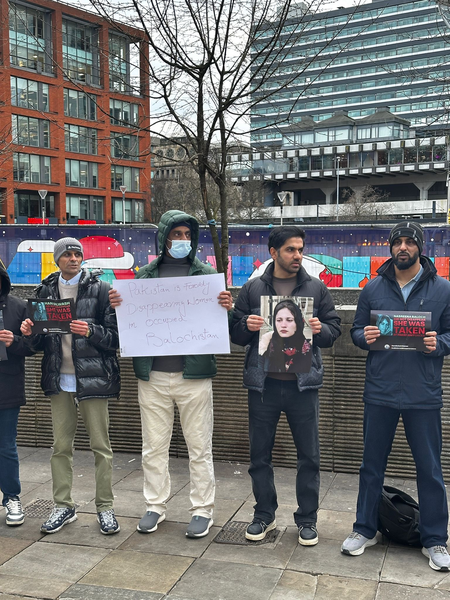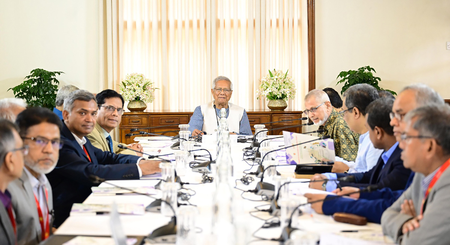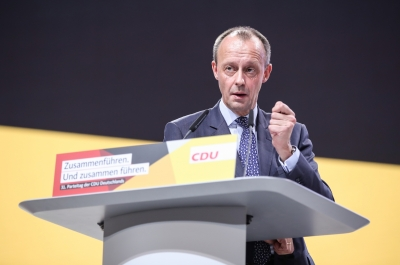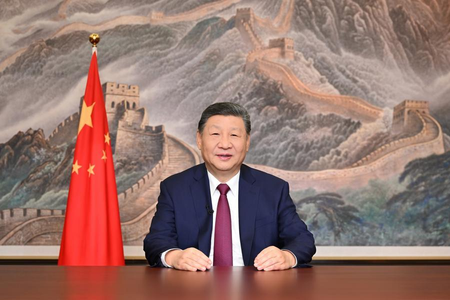
New Delhi, Sep 28 (IANS) Cricket has been described as a gentleman’s game where grace, patience, and fair play come together to create a spectacle for the masses. Like any sport, its traditions have long dissuaded political sloganeering or any form of disposition to violence. Yet, when Pakistani batter Sahibzada Farhan mimicked firing an AK-47 rifle with his bat during a recent Asia Cup T20 match against India, it was a moment of dragging this celebrated sport into a darker terrain.
Though India won the game fairly and squarely, as has been become an established norm now, and reinforce its dominance in the subcontinental rivalry, Farhan’s transgression and gesture eclipsed the cricket sport in itself. The image of a Pakistani cricketer enacting a Kalashnikov firing on the field became symbolic of something far larger, which is the militarised, radicalised psyche of a nation where violence is not seen as aberrant but as cultural expression.
This was not just a tasteless celebration. It was an act that revealed how, in Pakistan, the language of jihadist symbolism, perpetuated by military establishment since 1980s during Ziaul Haq’s regime, has permeated every level of society from politicians to artists, doctors, and even sportsmen.
The AK-47 has long been more than just a weapon in Pakistan. Since the 1980s, when the Pakistan became a frontline state to arm Afghan mujahideen against the Soviets with the help of Americans, the Kalashnikov has symbolized an “identity” of first “resistance” and afterwards extremism.
The so-called “Kalashnikov culture” spread far beyond the tribal frontiers with guns becoming part of weddings, political rallies, and every other social function.
This militarisation and Islamisation seeped into Pakistan’s cultural DNA. While military generals often boast of “bleeding India with a thousand cuts”, its politicians employ martial rhetoric to prove loyalty to the armed forces.
Similarly, while television dramas, most often sponsored by Inter-Services Public Relations (ISPR), glorifies military martyrs, religious clerics fuse jihad with national pride. And now, on the cricket field, a batsman celebrates his milestone not with raised arms or bowed heads, but with the gesture of a terrorist’s weapon.
Can one then dismiss this as youthful exuberance? No, as doing so would be akin to ignoring decades of deliberate social engineering that Pakistan as a country witnessed. The Pakistani military, which is inarguably the country’s most powerful institution, has long cultivated a narrative where militancy and nationalism are fused. Its public discourse often equates dissent with treachery and as such, violence is not only normalised but valorised.
However, Sahibzada Farhan is not an isolated case. There have been countless incidents where Pakistan’s popular figures from actors to doctors have publicly aligned with radical groups with celebrated musicians often singing paeans to jihad and military. Pakistan’s history is awash with educated young men having joined extremist groups, viewing violence as a higher calling.
Nevertheless, such things do not happen in a vacuum and have structural reasons underneath. In a country where the military dominates both politics and culture, the state has relied on radical Islam as glue to hold the multi-ethnic society together. Since 1980s, the country’s military establishment has amplified jihadist narratives to perpetuate its own supremacy.
The consequence is a society where a Kalashnikov celebration on an international cricket field, and broadcast to millions globally, does not feel out of place but resonates as patriotic bravado.
Sports are often used to project national soft power. For Pakistan, cricket has been one of the last domains where it could claim parity with India not so long ago. These cricket matches have often been treated as proxy wars and the cricket pitch as an extension of the battlefield. In this environment, it is unsurprising that players internalise militarised codes of behaviour where they perceive their bats as guns. Even smaller milestones like a half-century by an individual then becomes an opportunity to mimic the tools of violence that dominate Pakistan’s national imagination.
But unlike in other nations where such behaviour would spark outrage and disciplinary action, in Pakistan it finds tacit acceptance. While social media platforms brimmed with applause for Farhan’s gesture, hardly anyone from within the Pakistan Cricket Board seemed willing to condemn the act. This silence is telling in itself.
To understand why a cricketer would mimic an AK-47, one must trace Pakistan’s long descent into extremism. For decades, the military has funded and trained jihadist proxies, first against the Soviets in Afghanistan and then against India in Kashmir. These extremist groups have become extensions of its regional foreign policy.
It goes without saying that Pakistan has itself endured a catastrophic social cost of this normalisation of extremism. While universities and madrassas became recruiting grounds, generations grew up idolizing “militants” as heroes. Consequently, no province has escaped violent sectarian undercurrents, with the culture of dialogue, compromise, or peaceful coexistence being systematically eroded. What has remained of Pakistan is a polity where violence is not a last resort but a first instinct.
Despite enduring the blowback of the militancy with the rise of Tehreek-e-Taliban Pakistan and Islamic State with hundreds of terrorist attacks across the length and breadth of country, particularly Khyber Pakhtunkhwa, the state has never fully disavowed its decades old jihadist project. Instead, it rebranded militancy under softer guises, while preserving its central role in strategic thinking. And now, a cricketer’s on-field gesture has ensured that cricket, too, could not escape this shadow.
For decades, the international community has sought to engage Pakistan in dialogue, urging moderation and reform. Consequently, the United States led Western bloc beside Gulf countries have poured billions in development aid, military assistance, and diplomatic overtures, hoping to cultivate Pakistan as a “normal” state.
New Delhi, too, on its part, for long chose to pursue peace talks, cricket diplomacy, and back-channel negotiations, to get Islamabad end its terror sponsorship against India.
However, the pattern has been clear as each moment of India’s engagement was followed by Pakistan’s betrayal, with each handshake undercut by violence. The radicalised foundation of the Pakistani state ensures that such moderation is not sustained in any form. So, when even a cricketer’s celebration echoes jihadist imagery, it becomes naïve to expect transformation through dialogue.
As a norm of International Relations, there is a consensus that diplomacy works with only those states which are committed to civility, law, and accountability. Pakistan, by contrast, has been conditioned to respect only coercion. It is not polite words or cricket matches that alter its behaviour, but international censure, be it through sanctions and exposure of its complicity in extremism.
Sahibzada Farhan’s Kalashnikov gesture should not be trivialised as a sporting quirk as it is a symptom of a society where violence is embedded so deeply that even celebrations of personal success cannot escape its shadow.
It is a reminder that Pakistan’s problems are not simply of governance or economy but of a collective psyche shaped by decades of militarism and radicalisation. For India, and for the world, the message is sobering as it is a wishful thinking to expect Pakistan to reform through charm offensives or cricketing goodwill gestures.
The beauty of cricket lies in its civility of raising bats, shaking hands, and the acknowledgement of the crowd. But, when those rituals are replaced by gestures of killing, the sport itself becomes hostage to politics.
As such, Sahibzada Farhan’s mimicry of an AK-47 was not just poor sportsmanship, it was a window into a society where militarism trumps civility, and violence masquerades as pride.
Until Pakistan confronts this culture head-on, the world will continue to see Kalashnikovs, be it real or mimed, in its public life. The cricket field merely made visible what has long existed beneath the surface.
–IANS
scor/




